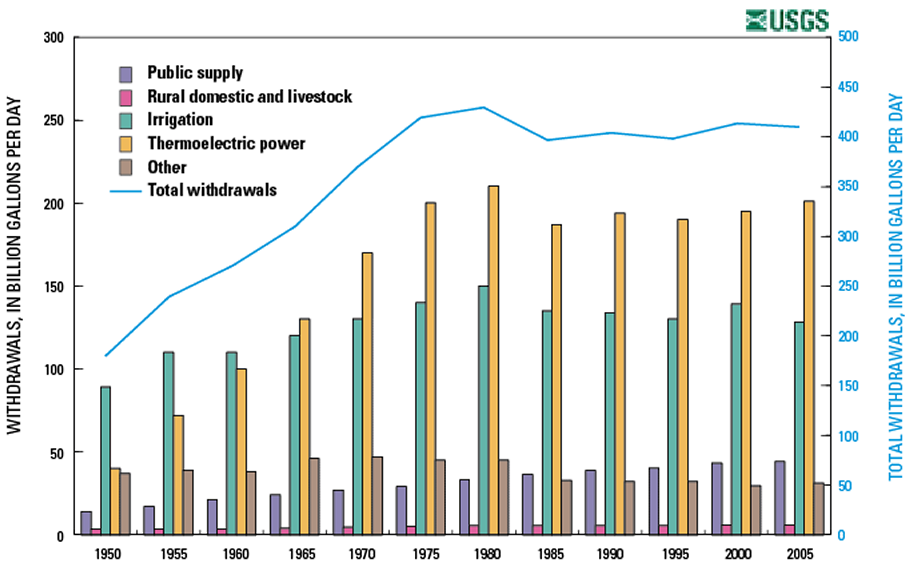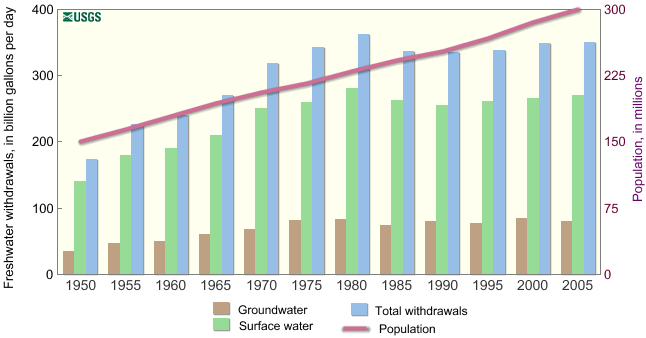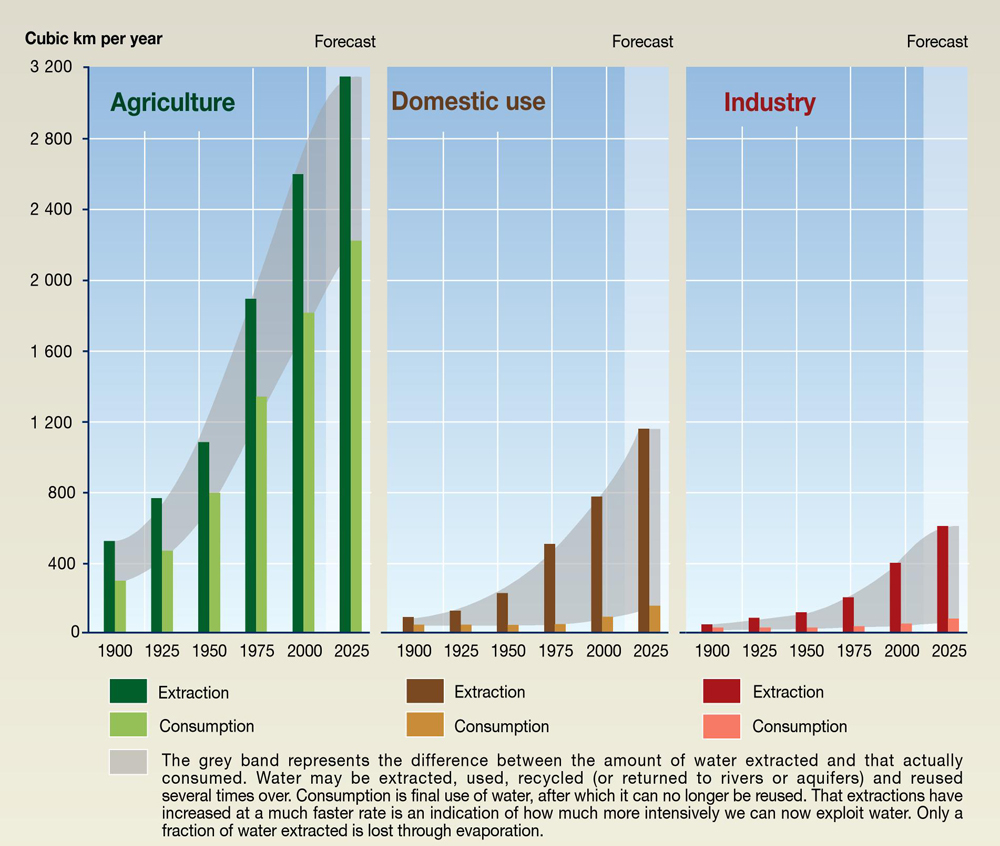| << Chapter < Page | Chapter >> Page > |


In contrast to trends in the U.S., global total water use is steadily increasing at a rate greater than world population growth (see Figure Trends in World Water Use from 1900 to 2000 and Projected to 2025 ). During the twentieth century global population tripled and water demand grew by a factor of six. The increase in global water demand beyond the rate of population growth is due to improved standard of living without an offset by water conservation. Increased production of goods and energy entails a large increase in water demand. The major global offstream water uses are irrigation (68%), public supply (21%), and industry (11%).

As groundwater is pumped from water wells, there usually is a localized drop in the water table around the well called a cone of depression (see Figure Formation of a Cone of Depression around a Pumping Water Well ). When there are a large number of wells that have been pumping water for a long time, the regional water table can drop significantly. This is called groundwater mining , which can force the drilling of deeper, more expensive wells that commonly encounter more saline groundwater. The occurrence of mining does not mean that groundwater will never be recharged, but in many cases the recharge rate is negligible on a human time-scale. Confined aquifers are more susceptible to groundwater mining due to their limited recharge areas. Urban development usually worsens groundwater mining because natural recharge rates drop with the proliferation of impermeable pavement, buildings, and roads. Extensive groundwater pumping around Chicago has created a gigantic cone of depression there. Because the water table dropped up to 250 m (800 ft) in the area (see Figure Drop in Water Table in a Confined Aquifer in the Area of Chicago, Illinois and Milwaukee, Wisconsin, U.S. from 1864 - 1980 ), many local public water suppliers have switched to Lake Michigan water. Chicago is fortunate to have a large alternate supply of fresh water; many arid locations don’t have that luxury. Other places where groundwater mining is a serious problem include the High Plains (Ogallala Aquifer) and the Desert Southwest of the U.S., Mexico, the Middle East, India, and China. Rivers, lakes, and artificial lakes (reservoirs) can also be depleted due to overuse. Some large rivers, such as the Colorado in the U.S. and Yellow in China, run dry in some years. The case history of the Aral Sea discussed below involves depletion of a lake. Finally, glaciers are being depleted due to accelerated melting associated with global warming over the past century.

Notification Switch
Would you like to follow the 'Sustainability: a comprehensive foundation' conversation and receive update notifications?